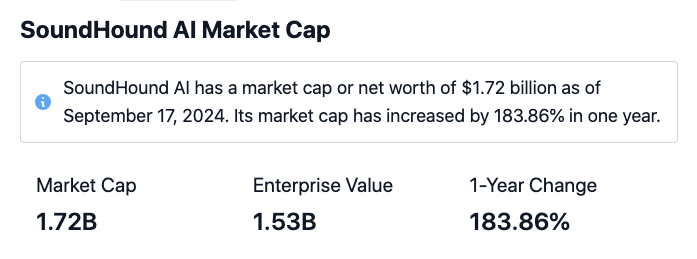20 Top Tips For Picking Ai Stock Sites
20 Top Tips For Picking Ai Stock Sites
Blog Article
Top 10 Tips For Evaluating The Strategy Customization Of Ai Stock Predicting/Analysing Trading Platforms
Strategy customization is a key characteristic of AI trading platforms that predict and analyze stocks, as it allows users to customize the platform according to meet their particular trading needs as well as their risk tolerance and market conditions. Platforms that have powerful customization capabilities can boost your trading efficiency. Here are 10 top tips for evaluating the customization options offered by these platforms.
1. Evaluate Pre-Built Strategy Templates
A variety of templates: See if the platform offers a range of pre-built strategies for different trading styles (e.g., swing trading, day trading, and long-term investing).
Usability: Consider the ease with which these templates could be modified to meet your requirements.
Performance history. Find out if the platform includes historic performance data for previously built strategies.
2. Create Custom Strategy
Drag-and-drop: Search for platforms that offer drag-and-drop interfaces to create custom strategies.
Find out about coding options. For advanced users, it may be necessary to verify if the service allows custom programming.
Flexibility. Make sure you can define key components such as the parameters for risk management, entry and exit regulations, and any other elements that make up your strategy.
3. Check for Backtesting Capabilities
Historical data: Find out if your platform offers sufficient historical data to allow backtesting strategies.
Flexible parameters - Make sure you are able to alter parameters (e.g. indicators, timeframes) while back-testing.
Performance metrics: Check whether the platform has precise performance metrics (e.g., win rate Sharpe ratio, drawdown) for strategies that have been tested back.
4. Evaluate Real-Time Strategy Testing
Paper trading: Check if the platform provides the option of paper trading as well as simulation mode to test strategies in real-time without risking your capital.
Live testing: Check if you can run strategies on live markets using tiny amounts of capital to assess their performance.
Real-time Adjustments: Check whether you're able to adjust your settings in real time in response to market conditions.
5. Assessment of Integration using Technical Indicators
Indicator library - Check whether the platform has a comprehensive collection of indicators that are technical, like moving averages (e.g. RSI), MACD or RSI.
Custom indicators: Make sure you are able to design or import custom indicators to use in your strategies.
Check the combination of indicators.
6. Check for Risk Management Tools
Stop-loss/take-profit: Ensure the platform allows you to set stop-loss and take-profit levels within your strategies.
Position sizing: Find out whether you can define rules for position sizing (e.g. the amount that is fixed or percentage of the portfolio) to help manage risk.
Risk-reward: Make sure your platform permits you to determine risk-rewards for each strategy or trade.
7. Evaluate Multi-Asset Strategy Support
Asset Classes: Ensure that the platform is able to support strategies from multiple asset types (e.g. ETFs, Options, Forex and Stocks).
Strategies for cross-assets : You can make strategies that involve various asset types (e.g. pairs trading, hedges).
Market coverage: Ensure that the platform you're interested in is covered by the markets you are interested in (e.g. US or international cryptocurrencies, copyright).
8. Review Automation and Execution
Automated trading - Ensure that the platform is capable of automating strategies that are based upon predefined rules.
Order types: Check whether the platform can support different kinds of orders (e.g. market, limit and stop) to execute a strategy.
Latency: Verify that the platform is running at minimum latency for trading, especially if you are using high-frequency strategies.
9. Make sure you are using tools to optimize your strategy
Optimization of parameters: Make sure the platform provides tools to optimize strategy parameters (e.g., grid search or genetic algorithms).
Integration of machine learning: Check whether the platform incorporates machine learning to improve and optimize strategies.
Scenario analysis: Verify that the platform is able to test strategies under different market conditions (e.g. volatile bull, volatile, or bear).
Read the Community Feedback and User Reviews
User reviews: Examine user feedback in order to determine the platform's capacity to adapt strategies.
Community forums: Check whether you can locate forums where users can discuss and exchange ideas for custom strategies.
Support resources - Ensure that the platform has guides and instructions for users to develop and optimize strategies.
Bonus Tips:
Trial period: Experience the platform's customisation features with a no-cost demo or trial.
Scalability: Make sure the platform is able to manage complex strategies that change when you trade.
Customer support: Determine if the platform can provide support for issues related to strategy and concerns.
These guidelines will assist you analyze the various customization options available to AI trading platforms which predict/analyze stocks. So you can choose one that matches your objectives in trading and allows you refine and implement strategies. A platform that offers strong customization options can empower you to adapt to changing market conditions and improve the performance of your trading. Read the top the original source for best ai for trading for more recommendations including ai options trading, free ai tool for stock market india, ai stock price prediction, trade ai, ai for stock trading, trader ai review, trading ai, ai based trading platform, ai for trading, copyright ai trading bot and more.
Top 10 Suggestions For Evaluating The Social And Community Features Of Ai Stock Trading Platforms
Knowing how users communicate, interact, and learn is essential for understanding the AI-driven trading and platform for stock predictions. These features can enhance the user experience as well as provide valuable assistance. Here are 10 strategies for evaluating the community and social aspects of such platforms.
1. Active User Community
Tips - Make sure the platform is backed by a base of users engaged in ongoing discussions, sharing their insights and giving feedback.
Why: An active user community is a vibrant community in which members can learn from each other and grow together.
2. Discussion forums and boards
Verify the activity and the quality of message boards and discussion forums.
Why: Forums are a great opportunity for users to share thoughts, debate trends, and even ask questions.
3. Social Media Integration
TIP: Check if the platform is compatible with other social media platforms (e.g. Twitter and LinkedIn) to share news and information.
Why: The integration of social media with other platforms can boost engagement and offer current market information in real time.
4. User-Generated Materials
Find tools that let you create and share content like blogs, articles or trading strategies.
What's the reason? User-generated content fosters an environment of collaboration, and give a range of perspectives.
5. Expert Contributions
TIP: Ensure that the platform features contributions from experts in their field like AI or market analysts.
Why: Expert perspectives add credibility and depth in the community discussions.
6. Chat and Real-Time Messaging
Tips: Make sure that users are able to communicate with each other instantly by using chat or real-time messaging.
The reason: Real-time interaction allows quick data exchange and collaboration.
7. Community Moderation Support
Tip: Evaluate the level of support and moderating offered by the community.
Why? Effective moderation helps create a peaceful and positive atmosphere. Support is available to resolve issues quickly.
8. Events and Webinars
Tips: Check whether your platform has live sessions, Q&As, or webinars.
What are they: They provide an opportunity for industry professionals to meet with other participants and gain knowledge from them.
9. User Feedback and Reviews
Tip: Look out for features that allow users to give feedback or reviews regarding the platform and its features.
What is the reason? Feedback from users helps discover strengths within the community and areas for improvement.
10. Gamification and Rewards
Tips: Determine if the platform incorporates gaming elements (e.g. leaderboards, badges) or rewards for active participation.
Gamification can be a powerful method to encourage users' engagement with the community.
Bonus Tip: Privacy and Security
Be sure to use robust security and privacy measures in the social and community tools. This will help protect your personal information and data.
It is possible to evaluate these elements to determine if you're able to find a platform that provides a welcoming active community that can help you improve your trading skills and knowledge. Read the top trading ai bot advice for website recommendations including free ai tool for stock market india, trader ai app, ai trading app, ai trading, stock analysis app, best ai for trading, ai stocks to invest in, invest ai, ai stock, chart ai for trading and more.